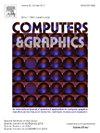机器人技术中的三维重建:综述
IF 2.8
4区 计算机科学
Q2 COMPUTER SCIENCE, SOFTWARE ENGINEERING
引用次数: 0
摘要
在本文中,我们深入研究了机器人技术中快速发展的3D重建领域,这是当代研究中至关重要的领域。通过整合3D重建技术,机器人参与和理解其环境的内在潜力得到了显着增强,该技术从自然进化和人类感知的复杂过程中汲取灵感。这项研究不仅强调了3D重建方法在更广泛的技术进步背景下的重要性,而且概述了它们对机器人领域的关键贡献。人类已经进化了数百万年,通过自然选择来适应周围的环境,使他们能够感知世界。3D重建方法受到自然过程的启发来复制对象,提供有关感知对象的更详细信息。通过这种对象感知方法,机器人技术在利用这些技术与现实世界互动方面发挥着至关重要的作用。我们的研究说明了在机器人技术中应用3D重建方法的最新进展,并讨论了该领域未来研究的必要改进和应用。本文章由计算机程序翻译,如有差异,请以英文原文为准。

3D Reconstruction in Robotics: A Comprehensive Review
In this paper, we delve into the swiftly progressing domain of 3D reconstruction within robotics, a field of critical importance in contemporary research. The inherent potential of robots to engage with and understand their environment is significantly enhanced by integrating 3D reconstruction techniques, which draw inspiration from the complex processes of natural evolution and human perception. This study not only highlights the importance of 3D reconstruction methodologies in the broader context of technological advancement but also outlines their pivotal contributions to the field of robotics. Humans have evolved over millions of years to adapt to their surroundings through natural selection, enabling them to perceive the world. 3D reconstruction methods are inspired by natural processes to replicate objects, providing more detailed information about the perceived object. With this approach to object perception, robotics plays a crucial role in utilising these techniques to interact with the real world. Our study illustrates recent advancements in applying 3D reconstruction methods within robotics and discusses necessary improvements and applications for future research in the field.
求助全文
通过发布文献求助,成功后即可免费获取论文全文。
去求助
来源期刊

Computers & Graphics-Uk
工程技术-计算机:软件工程
CiteScore
5.30
自引率
12.00%
发文量
173
审稿时长
38 days
期刊介绍:
Computers & Graphics is dedicated to disseminate information on research and applications of computer graphics (CG) techniques. The journal encourages articles on:
1. Research and applications of interactive computer graphics. We are particularly interested in novel interaction techniques and applications of CG to problem domains.
2. State-of-the-art papers on late-breaking, cutting-edge research on CG.
3. Information on innovative uses of graphics principles and technologies.
4. Tutorial papers on both teaching CG principles and innovative uses of CG in education.
 求助内容:
求助内容: 应助结果提醒方式:
应助结果提醒方式:


